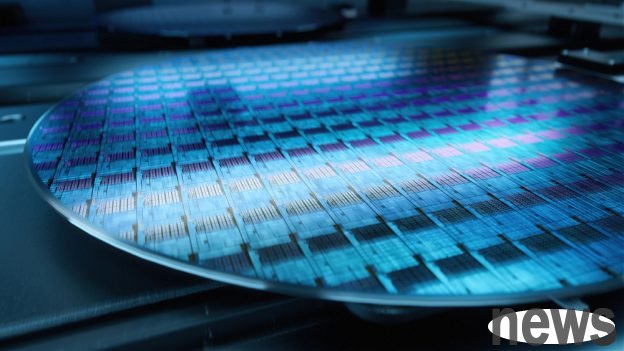
The US taxes related to the United States are expected to be on August 1st, and the semiconductor taxes are about to be released, and all walks of life are paying close attention. Scientific experts who have studied geopolitics for a long time expect that Taiwan’s tax rate related to other countries may be comparable to Japan’s 15%. Semiconductor tax related to Taiwan has limited impact on Taiwan’s advanced processes, and mature processes may face higher tax relatedness. However, Chinese businessmen will be the first to take the lead, which will help normalize market order.
US President Trump recently announced a new tax rate on all other taxes, with Japan's latest tax rates of 15%, South Korea's 25%, Vietnam's 20%, and Philippines' 19%. According to financial reporting, the European Union and the United States are close to reaching a trade agreement, and the taxes may be the same as Japan.
Experts said that following the recent progress in US tax policy, Japan's drop from the previous 25% to 15%, can confirm that the US tax rate is floating. High taxes are a means for the United States to drive countries to sit on the table. If the market can be opened, the U.S. investment will be increased, and the commitment to de-Singapore will be increased, the taxes may be obtained.
Currently, the UK tax rate is 10% the lowest. Experts believe that 10% will be the bottom line of the US tax rate, and no national tax rate should be lower than 10%. The implementation of taxes in the United States will receive the effect of "one stone and four birds" and will not only relate to tax revenue, increase US investment, increase foreign sales, and achieve the goal of de-Singapore.
Experts said that Japan and the European Union are both important allies of the United States, and their economic size is larger than that of Taiwan and South Korea, which is relatively important for the United States to improve its trade deficit.
Experts said that the United States initially imposed high taxes on allies, which caused doubts, and was worried that allies were forced to rely on China. It was observed that Japan's tax levy has dropped to 15%. If the European Union's tax levy rate is really the same as Japan, it should have certain commitments to de-Singapore, and the tax levy has achieved remarkable results.
Experts analyzed that the tax rate of the United States can be roughly divided into two categories: "American Team" and "Chinese Team". The national tax rate of the "American Team" is mostly below 20%. For example, in Japan and the Philippines, the "Chinese Team" countries are highly dependent on taxes.
Taiwan insists on de-Sinics, and Taiwan's factories have also made advance arrangements. Taiwan Power announced that it would invest in the United States with a code-plus investment in the United States before the relevant taxes were announced, fully demonstrating its friendly attitude. Experts said that Taiwan's semiconductor industry is very important, and it is expected that Taiwan's tax rate should be lower than 20%, which is not ruled out that it may be comparable to Japan.
Experts say that South Korea cannot abandon the Chinese market, and there is no consensus on the internal decision on de-Singapore. Unless the profit is given, the tax rate in South Korea is expected to drop below 20%.
Experts said that the implementation of the US tax policy is irreversible, and it will drive regional reorganizations from all walks of life around the world. The labor-intensive and low-gross profit margin industries will accelerate their shifts to developing countries, and the developing countries will focus on industries with higher technological content.
Experts say that the market environment will be more steep and manufacturing will develop towards the trend of the big ones. He believed that the government should not intervene in supporting enterprises, but should naturally guide the development of manufacturers by market mechanisms.
As for semiconductor tax responsibilities, experts said that it can be roughly divided into two parts: advanced processes of 7 nanometers and below and mature processes of 10 nanometers and above. Among them, the advanced processes are only related to NTEC and Samsung from South Korea. It is expected that the United States should collect basic tax responsibilities. The main purpose is to drive investment in the United States. Therefore, if the investment progress is slow, the tax rate may gradually increase.
Experts said that NTEC has not only promised to invest US$165 billion in the United States, but also built 6 wafer factories, 2 advanced packaging factories and 1 R&D center. NTEC's advanced production semiconductor taxes can be transferred to customers, which has limited impact. In contrast, Samsung's investment pace in the United States is slow and may face greater pressure.
In the mature process, experts said that in relation to Taiwan, South Korea, the European Union, Japan, Singapore, Malaysia and China, it is expected that it may be similar to drug and automobile measures, and that high taxes will be imposed. The main purpose is not only to drive investment in the United States, but also to achieve the de-Singapore target.
Experts expect that China may be subject to high tax rates. Whether the EU and Japan will follow the high tax on China's mature semiconductor chip courses is worthy of observation. As a large amount of Chinese production capacity is hindered, it will help restore the order of the mature process market.
Extended reading: The U.S. and Japan reached a trade agreement, and aesthetics estimated that Taiwan’s taxes were 15% to 20%